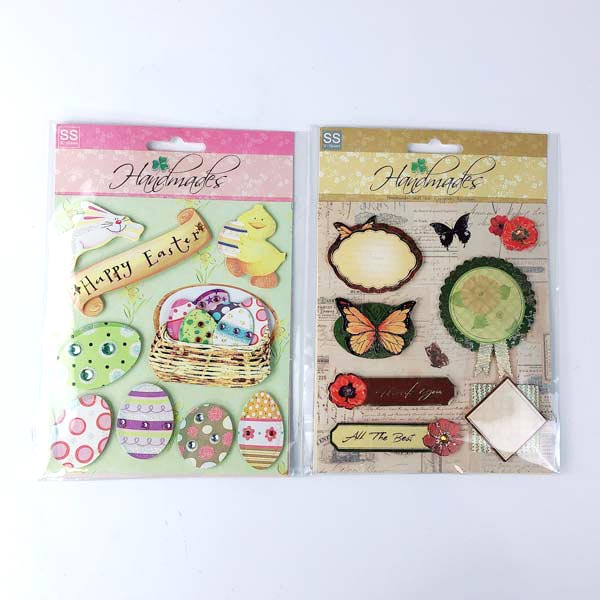The Manufacturing Process of Colored Acrylic Layered Glitter Stickers: A Step-by-Step Guide
2024-05-30
Colored Acrylic Layered Glitter Stickers are popular for their vibrant colors and eye-catching sparkle, making them a favorite for various decorative and branding applications. The manufacturing process of these stickers involves several detailed steps, each crucial to ensuring the final product is both durable and visually appealing. Here’s a comprehensive guide to the process from start to finish.
Step 1: Designing the Sticker
The manufacturing process begins with the design phase. Graphic designers create detailed digital designs using software like Adobe Illustrator or CorelDRAW. These designs include precise specifications for shape, size, color, and glitter pattern. The design must be meticulously planned to ensure that the final product meets aesthetic and functional requirements.
Step 2: Preparing the Acrylic Sheets
Once the design is finalized, the next step is preparing the colored acrylic sheets that will serve as the base for the stickers. Acrylic sheets are available in a variety of colors and thicknesses. The sheets are cut to size using precision cutting tools, such as laser cutters, to match the dimensions specified in the design. Laser cutting ensures clean edges and accurate shapes.
Step 3: Adding the Glitter Layer
The signature sparkle of these stickers comes from the glitter layer. This involves applying a thin layer of adhesive to the acrylic base and then sprinkling or pressing glitter onto the adhesive. The glitter can be made from various materials, including polyester or aluminum, and comes in different sizes and colors to create the desired effect.
For a more uniform application, some manufacturers use a process called screen printing, where the glitter adhesive is applied through a mesh screen in a specific pattern. This method allows for precise control over the glitter distribution.
Step 4: Curing the Adhesive
After applying the glitter, the adhesive needs to be cured to ensure it bonds securely to the acrylic base. Curing can be done using heat, UV light, or simply allowing the adhesive to dry over time, depending on the type of adhesive used. Proper curing is essential to ensure the glitter stays in place and doesn’t flake off during use.
Step 5: Laminating the Sticker
To protect the glitter layer and enhance the sticker's durability, a clear laminate is applied over the top. This laminate is usually made from a thin, transparent plastic film that adds a glossy finish and shields the glitter from wear and tear. The lamination process can also add extra UV protection to prevent colors from fading over time.
Step 6: Cutting the Stickers
With the glitter and laminate layers in place, the next step is to cut the stickers into their final shapes. This is typically done using die-cutting or kiss-cutting techniques. Die-cutting involves cutting through all layers of the sticker, including the backing paper, while kiss-cutting only cuts through the sticker and laminate layers, leaving the backing paper intact. Kiss-cutting is ideal for sticker sheets where multiple stickers are provided on a single sheet.
Step 7: Applying the Adhesive Backing
The final step in the production process is applying the adhesive backing. This is usually a pressure-sensitive adhesive that allows the sticker to be easily applied to various surfaces. The adhesive backing is covered with a protective liner that is peeled away when the sticker is ready to be used.
Step 8: Quality Control and Packaging
Before the stickers are packaged and shipped, they undergo a thorough quality control check. This involves inspecting the stickers for any defects, such as incomplete glitter coverage, misalignment, or imperfections in the cutting. Once they pass the quality control checks, the stickers are packaged, often in sheets or rolls, ready for distribution.
Conclusion
The production of Colored Acrylic Layered Glitter Stickers is a meticulous process that combines creative design with precise manufacturing techniques. From designing and cutting the acrylic base to applying the glitter layer and adhesive backing, each step is crucial in creating a product that is both visually stunning and durable. Understanding this process not only highlights the craftsmanship involved but also underscores the quality that goes into every glittering sticker. Whether used for personal projects or commercial branding, these stickers are a testament to the intricate art of manufacturing.



